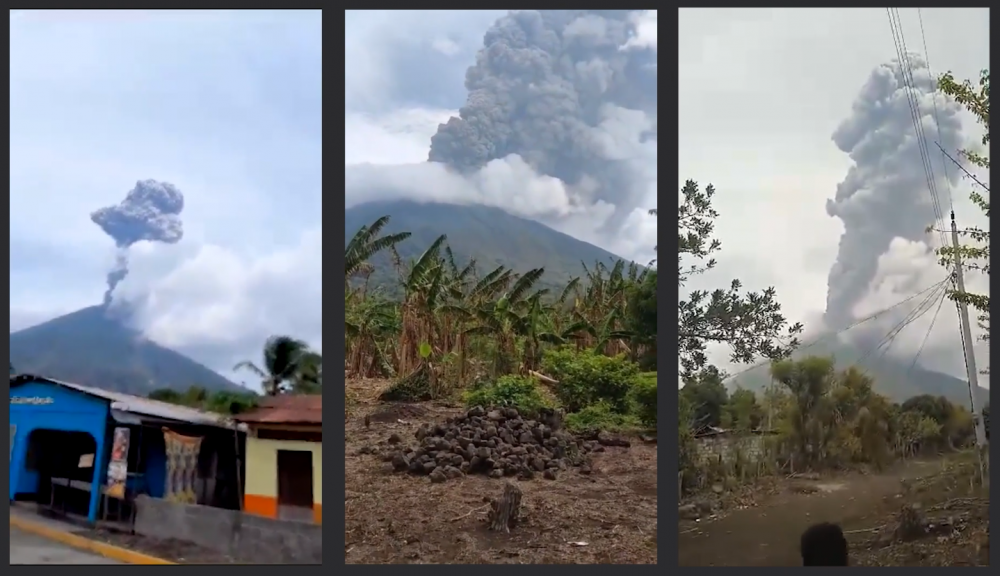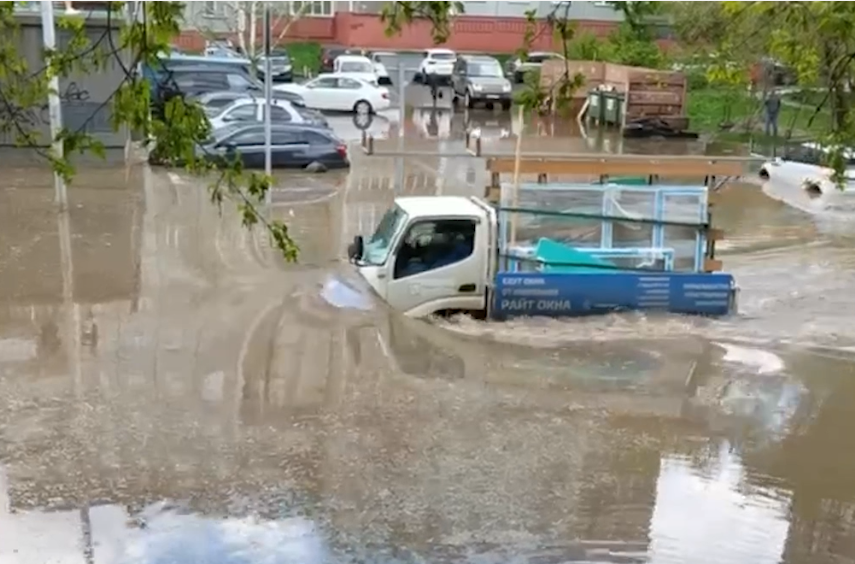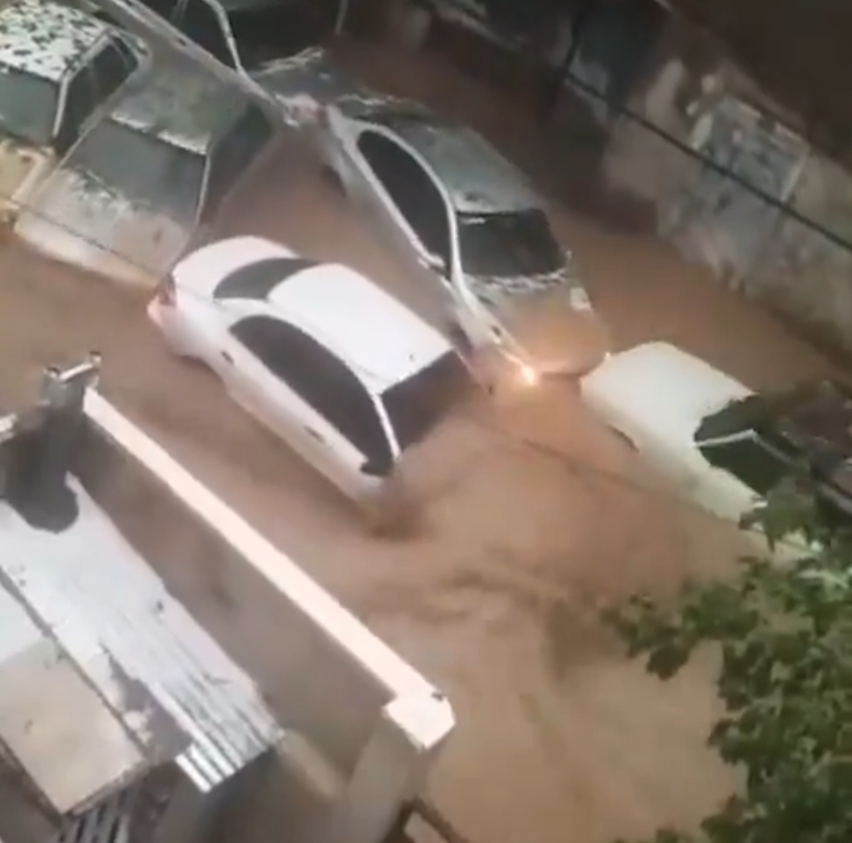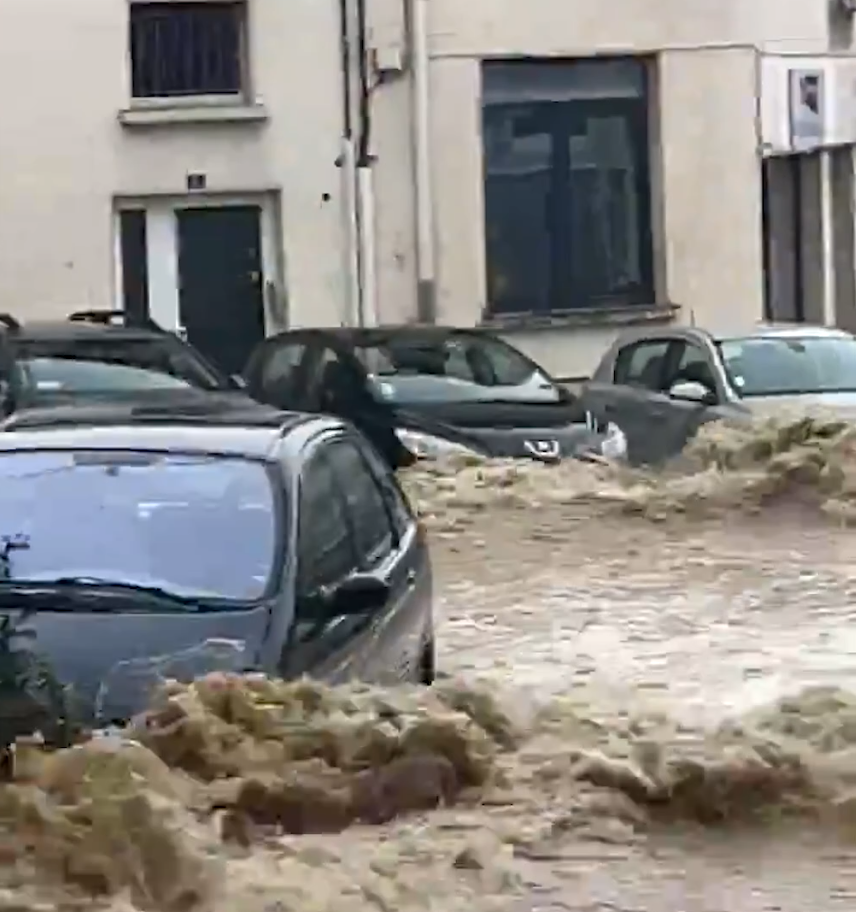Summary of Climate Disasters on the Planet from May 15 to May 21, 2024
North America
USA
On the night of May 17, a series of deadly storms and tornadoes swept through southeast Texas and Louisiana, hitting the Houston area with hurricane-force winds reaching up to 100 mph (44.7 m/s). Seven people were killed.

Aftermath of the destructive storm in Houston, USA
The storms left a massive trail of destruction in Houston, with shattered windows of hotels and office buildings, broken glass on streets, downed power lines, and ripped out walls in some houses. Traffic lights were out across Houston, and roads were clogged with debris from damaged buildings and toppled trees, making driving conditions extremely hazardous.
Power outages
resulted in the spillage of more than 100,000 gallons of domestic wastewater
in three separate locations across the city.
Over 1 million electricity consumers were without power. Local authorities reported that it would take several weeks to repair the damage. People are unable to use air conditioners and other household appliances just as the affected regions were hit by intense unseasonal heat and high humidity following the storm.
The National Weather Service classified the line of severe storms in Houston as a “derecho” — a term in the USA for extensive, long-lived straight-line storms that are accompanied by severe thunderstorms and heavy rains, capable of covering large distances. The developing line of such storms accelerates over hundreds of miles, causing extensive damage due to strong winds.
Strong winds downed power lines, Texas, USA
Preliminary estimates from the international weather forecasting service AccuWeather put the economic damage from the destructive disaster at a staggering $5–7 billion.
Volcanoes
On May 16, the Concepción volcano erupted on Ometepe Island in Nicaragua. The explosion was accompanied by gas emissions, and an ash plume rose to 2 km.

Eruption of Concepción Volcano on Ometepe Island, Nicaragua
The Moyogalpa village was the most affected. Streets, houses, and vehicles were covered with a layer of ash up to 1 mm thick. The last similar activity with ash-and-gas explosions at Concepción volcano occurred in 2010.
On May 16, following a series of eruptions from Mount Ibu in North Maluku province, Indonesian authorities raised the alert level to the highest. Residents and tourists were advised not to approach the volcano's crater within 7 km (4.4 miles).
On May 17, the Semeru volcano in Indonesia's East Java province erupted five times, spewing columns of volcanic ash. Authorities urged people to stay away from the danger zone around the crater to avoid harm from hot steam clouds, lava flows, and lahars.
On May 20, a new seismic swarm began in the area of the Campi Flegrei supervolcano in Italy. The Observatory of the National Institute of Geophysics and Volcanology (INGV) recorded at least 150 earthquakes at a depth of 2.6 km in this area, with a maximum magnitude of 4.4, localized in the Solfatara area, nearly 3 km from the town of Pozzuoli.
This is the strongest earthquake in the region in the last 40 years.

Seismic swarm in the area of the Campi Flegrei supervolcano, Italy
Thousands of people ran out onto the streets in fear. Many decided not to return to their homes due to ongoing tremors and spent two nights outside in tents and their cars. Some buildings were damaged, and part of them were deemed unfit for habitation, leading to the displacement of at least 46 families.
Despite the severity of the situation, the evacuation plan is still being prepared.
South America
Chile
May 2024 in Chile may become
the coldest since the fall of 1950, whenmeteorological records began.
Since May 7, the country has experienced the longest series of days with extremely low temperatures, atypical for this time of year. An unusual snowstorm that hit various cities across the country caused chaos on the roads and the cancellation of classes in educational institutions.

Abnormal Cold Snap and Unseasonal Snowfall in Chile
In the Santiago Metropolitan Region, a sudden snowstorm led to mass power outages affecting 220,000 people. This snowfall so early in the winter season in the Southern Hemisphere was highly unexpected, as Santiago usually experiences mild winters with cool temperatures and rains. In the region's temperate semi-arid climate with a Mediterranean character and relatively low elevation, sub-zero temperatures or snowfalls are rare.
The subsequent low temperatures in Santiago broke the record for the longest May “cold wave,” surpassing the series of eight consecutive extremely cold days recorded in 1985.
On May 16, Santiago was even colder than it typically is in the middle of winter. The temperature in the capital dropped to 37 degrees Fahrenheit (2 degrees Celsius), while the average low for May is 43 degrees (6 °C).
The cold wave also affected some regions of Argentina, Uruguay, and Paraguay.
Asia
South Korea
On the evening of May 15, the Korea Meteorological Administration (KMA) issued a heavy snowfall warning. This is the first time such a warning has been issued in mid-May. By 1 a.m. local time on May 16, Hyangro Peak in Goseong County, Gangwon Province, had received 12.9 centimeters of snow. On Mount Seorak, Gangwon Province, the snow depth exceeded 42 centimeters by morning. This is an unprecedented event for the country.

Severe unseasonal snowfall in Gangwon Province, South Korea
Russia
A powerful storm with rain and hail hit Novosibirsk on May 20, flooding most of the city's streets. The sudden and intense weather forced people on the streets to urgently seek shelter, holding onto railings, handrails, and walls of buildings. The hail fell in a solid wall. The storm lasted no more than half an hour. However, it was enough to cause numerous problems for the city's residents: cars were submerged, roofs were torn off houses, and trees were uprooted. In some places, powerful water flows eroded the soil, causing concrete barriers to collapse.

Sudden flooding in Novosibirsk, Russia
Iran
Iran continues to experience extreme rains. In the city of Mashhad, 38.3 mm (1.5 inches) of rainfall was recorded in just 40 minutes on May 15, which is a very high figure comparable to one and a half months of average rainfall
(the average monthly rainfall for May is 25.5 mm, or 1 inch).
This caused a sudden devastating flood. Buildings were flooded with water 1.5 to 2 meters high. Everything in the homes was floating, even refrigerators. Traffic jams caused by the rains slowed the work of rescue services. In some areas of the city, there were power outages. As a result of the flood, 8 people died, including a mother and her four children who drowned, trapped in their own home. Twelve people were reported missing. 450 people were evacuated from 150 damaged homes.

Aftermath of extreme rains, Mashhad, Iran
On May 18, Mashhad was hit again by heavy rain and hail, with hailstones reaching 10 cm in size. The hail broke tree branches, shattered windows, and damaged cars.
The rains in Mashhad in May have already been called unprecedented in the last 200 years.

People seeking shelter from heavy rain, Mashhad, Iran
Europe
Europe has been hit by a cascade of abnormal natural disasters.
Since May 15, prolonged hailstorms have been ravaging much of France. Thousands of hectares of vineyards were destroyed by hail, causing damage to production in some areas, where up to 100% of the future harvest was lost. In northeastern France, in the Bas-Rhin department, a state of heightened danger was declared due to rains and floods on May 16. Traffic on highways was blocked. On May 20, a hailstorm hit the city of Dijon, resulting in streets being flooded with hail, paralyzing vehicle traffic.

Floodwaters paralyze traffic in the streets of Dijon, France
In Germany, the situation was no better. The massive amount of rain that fell on the night of May 17-18 caused floods and landslides. In some areas, rescuers worked around the clock, trying to evacuate residents from flooded homes and clear roads of debris and mud. The flood caused widespread power outages and train cancellations.
In the Saarland state, one and a half months' worth of rainfall fell in a day — 100 mm (3.93 inches). In Ottweiler, dams burst, and the town was entirely submerged. Local authorities reported significant damage to the city's infrastructure and private homes.
On the same day, a storm with rain and hail swept through Poland. The city of Gniezno was at the epicenter. Within minutes, the streets were covered with a layer of hail. The storm wind tore off building roofs. The storm drains could not cope with the large volume of water. Basements and low-lying ground floors were flooded. Firefighters had to rescue a woman who was trapped in her car.
Earlier, hail had caused extensive damage in the Lublin Voivodeship
(the highest-level administrative unit in Poland).
“This is a terrible, tragic situation. I saw with my own eyes the aftermath of these weather anomalies that took place on Sunday night. For the first time in my life I saw plants: currants, strawberries, raspberries looking as if someone had chopped them up with a sharp tool. The losses are one hundred percent,” said the Lublin Voivode. It should be noted that this is not the first catastrophic situation this spring, when weather conditions caused enormous damage to Polish agriculture in a short time. A few days earlier, temperature drops destroyed entire fruit plantations.

Hail drifts in Lublin Voivodeship, Poland
In the Netherlands, on May 20, after a severe thunderstorm with hail, there was significant flooding. Many streets in cities were submerged. Some people had to leave their homes.
In the municipality of Achtkarspelen, a nursing home had to be evacuated. In the village of Buitenpost, Friesland province, the amount of precipitation and hail was so great that it started to flood buildings through the sewer system.

Water and hail flood homes through sewers, Friesland province, Netherlands
In Belgium, on May 18, the municipality of Voeren experienced the most severe flooding in its history. Five hundred families were left without electricity.
Turbulence
Passengers on a London-Singapore flight experienced horror and panic when the plane encountered sudden turbulence. The aircraft sharply dropped almost 2,000 meters (6000 feet) in just 3 minutes.

Sudden loss of altitude by plane during turbulence, London-Singapore route
According to one passenger, everyone who was sitting and not wearing seat belts was immediately thrown to the ceiling. Many passengers broke through ceiling panels with their heads. The crew managed to make an emergency landing at Bangkok airport.

Evacuation of passengers from London-Singapore flight injured during severe turbulence
Of the 229 people on board, 104 were injured, with six in critical condition, mainly due to severe head injuries. One passenger died during the incident: preliminary reports suggest he had a heart attack.
Over a year ago, at the “Global Crisis. There Is a Way Out” forum, experts warned that incidents of air pockets forming without apparent cause would become more frequent, particularly at altitudes of 8 km and above, where most airliners operate.
Planes will literally fall into these air pockets, leading to serious disasters and loss of life. This is already happening, and the situation is expected to worsen. In the near future, these pockets will become more frequent and reach the ground. This will make flying in such conditions impossible.
This is not the only forecast about the increasing climate disasters in the coming years that was made at the “Global Crisis” forum series. Unfortunately, events are unfolding according to these forecasts.
But despite this, we still have a chance to avoid a tragic end for humanity. Specific steps on how to achieve this were outlined at the forums.
Time is running out. And our ability to seize this chance depends on the actions of each of us!
You can watch the video version of this article here:

Leave a comment